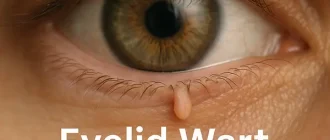Dry eyes. It’s a condition that can be downright debilitating, yet often overlooked. Imagine living with a constant gritty sensation in your eyes, as if someone threw sand in them, while tears—meant to soothe—become more like a distant memory. For millions of people worldwide, dry eyes are an everyday battle. One of the most effective, yet misunderstood treatments? Punctal plugs.
How Common Is Dry Eye Disease?
First, some numbers. Dry Eye Disease (DED) affects approximately 16 million adults in the United States alone, according to the American Academy of Ophthalmology. However, studies estimate that nearly twice that number have undiagnosed symptoms, meaning around 30 million people could be dealing with some level of discomfort or vision fluctuation caused by dry eyes.
This isn’t just an aging problem—although nearly 30% of adults over 50 experience symptoms—younger individuals are increasingly affected due to environmental factors, extended screen time, and lifestyle choices. Interestingly, the rise in screen time has been linked to a higher prevalence of DED in people under 40. Spending hours staring at phones and laptops reduces the blink rate by up to 60%, leading to faster tear evaporation.
The Role of Punctal Plugs: What Are They?
Punctal plugs, or as some prefer to call them, “tear duct plugs,” are small devices placed in the tear ducts (puncta) to prevent tears from draining too quickly. The concept is simple: retain the existing moisture for longer periods. This makes them an excellent option for patients who haven’t had success with over-the-counter artificial tears or other treatments.
Punctal plugs come in different forms—temporary, typically made from collagen, and permanent, usually made from silicone or thermal hydrogels.
| Type of Punctal Plug | Material | Duration | Cost (approx.) |
|---|---|---|---|
| Temporary | Collagen | Dissolves in days/weeks | $30 – $50 per plug |
| Semi-permanent | Silicone | Long-term | $150 – $300 per plug |
| Thermally Sealed | Thermal Hydrogel | Long-term (can be adjusted) | $200 – $400 per plug |
Who Needs Punctal Plugs?
Plugs are recommended for individuals with moderate to severe dry eyes who haven’t responded well to conventional treatment, such as artificial tears or lifestyle changes. Dr. Alan White, an ophthalmologist with over 20 years of experience, explains, “Punctal plugs aren’t usually the first option, but they are highly effective when patients don’t find relief from lubricating drops or if they have chronic symptoms related to autoimmune disorders.”
Autoimmune disorders like Sjögren’s syndrome and rheumatoid arthritis are common culprits behind severe dry eyes. Many patients with these conditions find that the relief from punctal plugs allows them to go about their daily lives without the constant irritation of dry, burning eyes.
The Science: How Do Plugs Help?
Think of punctal plugs as drain stoppers. When the tear drainage system is blocked, tears stay on the eye surface longer, providing better lubrication. The moisture trapped in the eye can reduce symptoms such as irritation, redness, and the scratchy feeling that often accompanies DED.
But punctal plugs don’t work for everyone. Recent clinical data suggests that about 80% of patients experience significant symptom relief, but around 20% might not respond well due to pre-existing eyelid or tear film abnormalities.
Are There Side Effects?
While punctal plugs are considered safe, they aren’t entirely without risk. Here are a few potential downsides:
- Discomfort: Approximately 15-20% of patients report discomfort or a sensation of something in the eye after the plugs are placed. This is more common with silicone plugs.
- Infection: Though rare, infections can occur if bacteria are introduced during placement. Proper hygiene and an experienced practitioner can minimize this risk.
- Over-tearing: Some patients experience an overflow of tears, particularly when plugs work “too well,” causing tears to build up and spill over. Epiphora, as it is known, can be managed by adjusting plug size or switching to a temporary version.
Emerging Trends: The Modern Face of Treatment
Recent trends are pointing toward the development of smart punctal plugs. Researchers are now experimenting with plugs that release anti-inflammatory drugs slowly over time, providing an additional layer of treatment for those with inflammation-related DED. Though still largely in the clinical trial phase, smart plugs represent the intersection of convenience and targeted therapy—aiming to reduce the need for constant re-application of eye drops.
There’s also a push towards thermal hydrogel plugs that adjust in size based on body temperature, providing a more natural fit and less discomfort. Patients have reported greater satisfaction rates due to the adaptability of these materials.
How Do Punctal Plugs Compare to Other Treatments?
| Treatment Option | Average Cost (USD) | Duration | Pros | Cons |
|---|---|---|---|---|
| Artificial Tears | $5 – $20 per bottle | Short-term | Readily available, easy to use | Requires frequent re-application |
| Prescription Eye Drops | $100 – $300/month | Long-term | Targets inflammation (e.g., Restasis) | Expensive, takes weeks for effect |
| Punctal Plugs | $150 – $400 per plug | Long-term | Effective moisture retention, minimal maintenance | Can cause discomfort, not suitable for all |
Our Editorial Team’s Advice for Managing Dry Eyes
If you’re considering punctal plugs, it’s essential to speak with your eye care provider about whether they’re the right option for you. Avoid excessive alcohol and quit smoking as these can exacerbate dry eyes and reduce treatment efficacy. Stay hydrated and try to take regular breaks from screens. While punctal plugs are a powerful tool in combating dry eye symptoms, combining them with lifestyle changes will ensure a more comprehensive approach to eye health.
Remember, dry eyes are more than just a nuisance—they can significantly impact your quality of life. Don’t settle for discomfort. Explore your options and find the solution that keeps your eyes as comfortable as possible.





